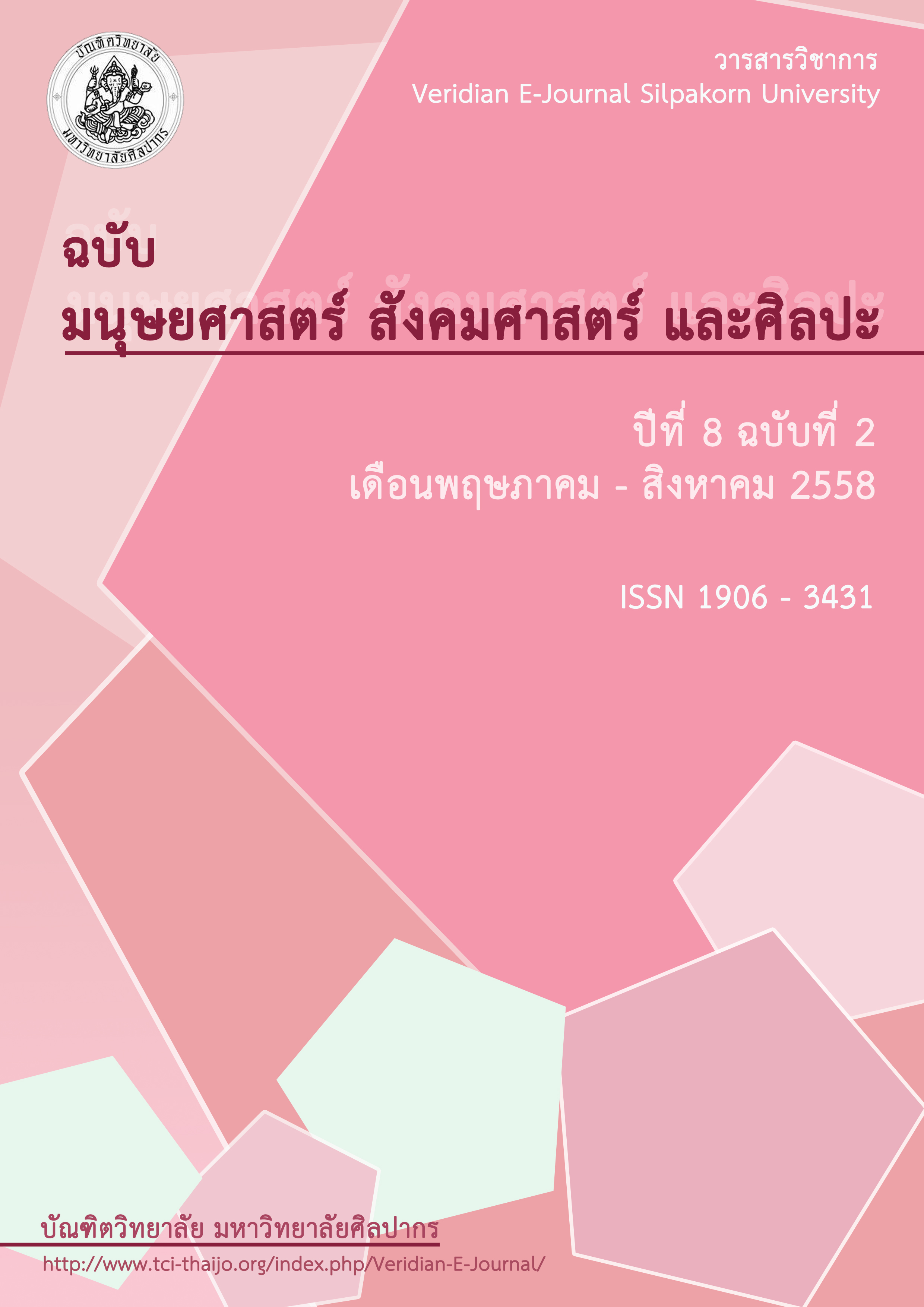การศึกษาผลการเรียนรู้และการคิดแบบคุณโทษและทางออก เรื่อง หลักธรรมทางพระพุทธศาสนา ของนักเรียนชั้นมัธยมศึกษาปีที่ 1 ด้วยวิธีคิดแบบโยนิโสมนสิการ
Main Article Content
Abstract
บทคัดย่อ
การวิจัยนี้มีวัตถุประสงค์เพื่อ 1) เปรียบเทียบผลการเรียนรู้ เรื่องหลักธรรมทางพระพุทธศาสนาของนักเรียนชั้นมัธยมศึกษาปีที่ 1 ก่อนเรียนและหลังเรียน ด้วยวิธีคิดแบบโยนิโสมนสิการ 2) เปรียบเทียบความสามารถในการคิดแบบคุณโทษและทางออก ของนักเรียนชั้นมัธยมศึกษาปีที่ 1 ก่อนเรียนและหลังเรียน ด้วยวิธีคิดแบบโยนิโสมนสิการ และ 3) ศึกษาความคิดเห็นของนักเรียนชั้นมัธยมศึกษาปีที่ 1 ที่มีต่อการจัดการเรียนรู้ด้วยวิธีคิดแบบโยนิโสมนสิการ กลุ่มตัวอย่างที่ใช้ในการวิจัยได้แก่ นักเรียนชั้นมัธยมศึกษาปีที่ 1/1 ภาคเรียนที่ 2 ปีการศึกษา 2557 โรงเรียนท่าช้างวิทยาคาร อำเภอท่าช้าง จังหวัดสิงห์บุรี สำนักงานเขตพื้นที่การศึกษามัธยมศึกษาเขต 5 จำนวน 24 คน เครื่องมือที่ใช้ในการวิจัย ประกอบด้วย (1) แผนการจัดการเรียนรู้ เรื่อง หลักธรรมทางพระพุทธศาสนา ของนักเรียนชั้นมัธยมศึกษาปีที่ 1 โดยใช้วิธีคิดแบบโยนิโสมนสิการ (2) แบบทดสอบวัดผลการเรียนรู้ เรื่อง หลักธรรมทางพระพุทธศาสนา (3) แบบวัดความสามารถในการคิดแบบคุณโทษและทางออก และ (4) แบบสอบถามความคิดเห็นของนักเรียนที่มีต่อการจัดการเรียนรู้ด้วยวิธีคิดแบบโยนิโสมนสิการ สถิติที่ใช้ในการวิจัยได้แก่ ค่าเฉลี่ย () ส่วนเบี่ยงเบนมาตรฐาน (S.D.) การทดสอบค่าทีแบบไม่เป็นอิสระต่อกัน (t – test dependent)
ผลการวิจัยพบว่า
1. ผลการเรียนรู้ เรื่อง หลักธรรมทางพระพุทธศาสนา ของนักเรียนชั้นมัธยมศึกษาปีที่ 1 ด้วยวิธีคิดแบบโยนิโสมนสิการ หลังเรียนสูงกว่าก่อนเรียนอย่างมีนัยสำคัญทางสถิติที่ระดับ .05
2. ความสามารถในการคิดแบบคุณโทษและทางออก ของนักเรียนชั้นมัธยมศึกษาปีที่ 1 ด้วยวิธีคิดแบบโยนิโสมนสิการ หลังเรียนสูงกว่าก่อนเรียนอย่างมีนัยสำคัญทางสถิติที่ระดับ .05
3. ความคิดเห็นของนักเรียนชั้นมัธยมศึกษาปีที่ 1 ที่มีต่อการจัดการเรียนรู้ด้วยวิธีคิดแบบโยนิโสมนสิการโดยภาพรวมอยู่ในระดับมาก
Abstract
The Purposes of this research were (1) to compare the learning outcome on Dharmas of Buddhism for Mathayomsuksa I Students before and aftertaught by Yonisomanasikara Thinking Method (2) to compare Advantages Disadvantages and Solution Thinking before and after (3) to study the opinions of Mathayomsuksa I students on learning taught by Yonisomanasikara Thinking Method. The sample of this research consisted of 24 Mathayomsuksa 1/1 students studying in the second semester during the academic Year 2014 in Thachang witayakara School. Thachang District. Singburi Province of The Office of Secondary School District 5. The research instruments of this research were (1) Lesson plans on Dharmas of Buddhism taught by Yonisomanasikara Thinking Method (2) Achievemen Test of Dharmas of Buddhism (3) Test of Advantages Disadvantages and Solution Thinking and (4) a questionnaire on the opinion of students about participation in the learning management taught by Yonisomanasikara Thinking Method. The Statistical Analysis employed were mean (), standard deviation (S.D.), t – test dependent and content analysis.
The research findings of the study were :
1. The learning outcomes of students on Dharmas of Buddhism gained after the participation in the learning management taught by Yonisomanasikara Thinking Method was higher than the learning outcomes gained before the participation learning at the level of .05 significance.
2. The abilities of Advantages Disadvantages and Solution Thinking of students gained after the participation in the learning management taught by Yonisomanasikara Thinking Method was higher than the learning outcomes gained before the participation learning at the level of .05 significance.
3. The opinions of students towards taught by Yonisomanasikara Thinking Method had high level.

